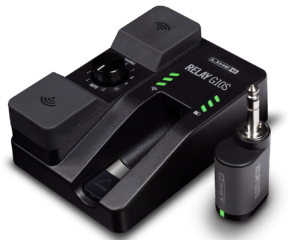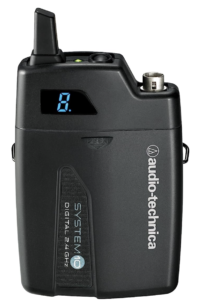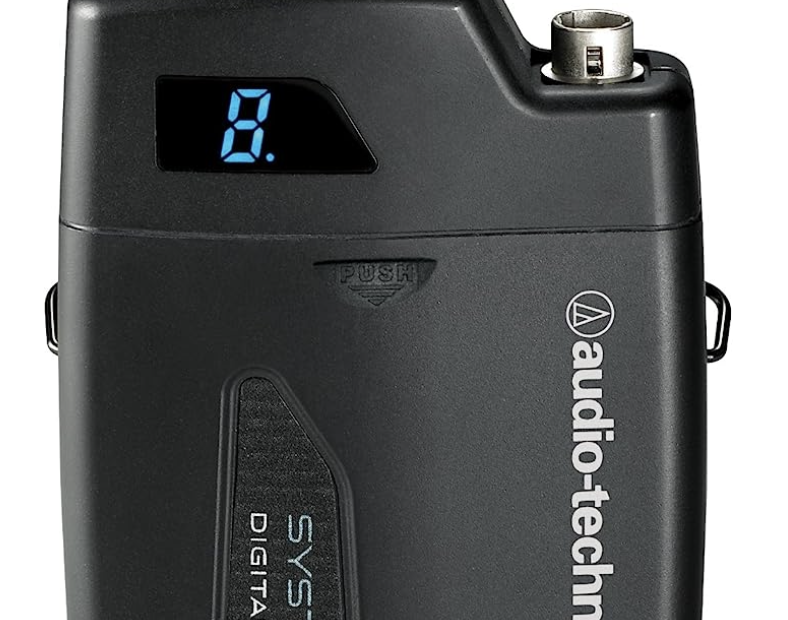Guitar wireless system is a system that has revolutionized the way musicians perform on stage, liberating them from the tangle of cables and offering unprecedented freedom of movement.
This cutting-edge technology has become an essential tool for guitarists, bassists, and other instrumentalists seeking a seamless and immersive live performance experience.
In this article, we explore the magic of guitar wireless systems, their components, benefits, and considerations for selecting the perfect system.
 Popular Guitar Wireless Systems
Popular Guitar Wireless Systems
Here are some examples of popular guitar wireless systems:
- Shure BLX14/P31: This system features a bodypack transmitter and a headset microphone, making it ideal for vocalists and guitarists who want hands-free performance.
- Line 6 Relay G10: Known for its simplicity, the G10 is a plug-and-play wireless system that connects directly to the guitar’s output jack, providing a reliable and user-friendly experience.
- Sennheiser XSW-D Instrument Set: This compact system offers excellent sound quality and ease of use. It includes a transmitter and receiver with a simple one-touch setup.
- Audio-Technica ATW-1101/G: Designed for guitar and bass, this wireless system offers clear and natural sound reproduction with easy setup and operation.
- Boss WL-20L Wireless System: Built with a low-latency design, the WL-20L offers a cable-like tone and a compact receiver that can be easily mounted on a pedalboard.
- Line 6 Relay G30: With a range of up to 100 feet, the Relay G30 provides professional-grade wireless performance and easy-to-read LCD displays for quick setup.
- Shure GLXD16: This digital wireless system offers exceptional audio quality, rugged construction, and automatic frequency management to avoid interference.
- AKG WMS40 Mini Instrumental Set: Affordable and reliable, this system features a compact transmitter and receiver with plug-and-play operation.
- Samson Concert 99 Guitar System: With a robust metal receiver and a transmitter that lasts up to eight hours on a single charge, this system offers exceptional value for guitarists.
- Sennheiser EW 172 G4: Designed for guitar and bass, this wireless system boasts outstanding audio quality, rugged construction, and a user-friendly interface.
What is a Guitar Wireless System?
 A guitar wireless system is a device designed to transmit an instrument’s audio signal wirelessly from the instrument to an amplifier or sound system. It comprises a transmitter attached to the instrument and a receiver connected to the amplifier or sound equipment. The wireless transmission of the audio signal eliminates the need for traditional instrument cables, allowing musicians to roam freely on stage without any restrictions.
A guitar wireless system is a device designed to transmit an instrument’s audio signal wirelessly from the instrument to an amplifier or sound system. It comprises a transmitter attached to the instrument and a receiver connected to the amplifier or sound equipment. The wireless transmission of the audio signal eliminates the need for traditional instrument cables, allowing musicians to roam freely on stage without any restrictions.
2. Components of a Guitar Wireless System:
- Transmitter: The transmitter is a compact device that connects to the instrument’s output jack. It converts the audio signal from the instrument into a radio frequency (RF) signal for wireless transmission.
- Receiver: The receiver, usually stationed near the amplifier or sound equipment, receives the RF signal transmitted by the transmitter. It converts the RF signal back into an audio signal, which is then sent to the amplifier for amplification.
- Antennas: Both the transmitter and receiver have antennas that ensure a stable and reliable wireless connection between the two devices.
3. Benefits of Using a Guitar Wireless System:
- Unmatched Mobility: Guitarists can roam freely on stage, interacting with the audience and fellow band members, without being tethered by instrument cables.
- Enhanced Performance: Wireless systems allow musicians to deliver more dynamic and engaging performances, captivating audiences with their movements and stage presence.
- Reduced Cable Clutter: By eliminating cables, musicians can enjoy a clutter-free stage, reducing the risk of accidents and creating a more professional appearance.
- Flexible Stage Setup: With a guitar wireless system, amplifiers and sound equipment can be positioned at a distance from the stage or even in separate locations, offering greater flexibility in sound setup.
- Seamless Instrument Switching: Musicians can effortlessly switch between different instruments, such as electric and acoustic guitars, during a performance, thanks to the hassle-free connectivity.
4. Considerations for Choosing a Guitar Wireless System:
- Battery Life: Opt for a system with long-lasting rechargeable batteries to avoid interruptions during performances.
- Frequency Range and Interference: Select a system that operates on clear and reliable frequency channels to minimize interference from other wireless devices.
- Sound Quality: Ensure the wireless system maintains high-quality audio transmission, without introducing latency or compromising the instrument’s tone.
- Durability and Range: Look for a robust and reliable system with sufficient range to cover the stage area effectively.
Using a Guitar Wireless System
 Using a guitar wireless system is a convenient way to free yourself from the constraints of cables and move freely on stage while maintaining excellent sound quality. Here’s a step-by-step guide on how to use a guitar wireless system:
Using a guitar wireless system is a convenient way to free yourself from the constraints of cables and move freely on stage while maintaining excellent sound quality. Here’s a step-by-step guide on how to use a guitar wireless system:
- Setup the Receiver: Start by placing the receiver unit on or near your amplifier or sound system. Ensure it is connected to the power source and ready to receive the signal from the transmitter.
- Prepare the Transmitter: Attach the transmitter to your guitar or strap. Depending on the model, it may connect to your guitar’s output jack or strap securely to your instrument.
- Power On: Turn on both the receiver and the transmitter units. Some systems may have a sync button or pairing process to establish a connection between the two units.
- Check Signal Strength: Most wireless systems have a signal strength indicator on the receiver. Ensure that the signal strength is strong and stable.
- Set the Channels: If your system has multiple channels, make sure both the receiver and the transmitter are set to the same channel to avoid interference.
- Test the Sound: Play your guitar and check the sound coming through the amplifier or sound system. Adjust the volume levels on the transmitter and the receiver as needed.
- Monitor Battery Life: Keep an eye on the battery life of both the transmitter and the receiver. Replace or recharge the batteries as necessary to avoid signal dropouts.
- Perform with Freedom: With the wireless system in place, move around the stage freely without worrying about tripping over cables or being tethered to a specific spot.
- Maintain Line of Sight: While using the wireless system, try to maintain a clear line of sight between the transmitter and the receiver. This can help ensure a strong and stable signal.
- After Use: When your performance is over, power off the transmitter and receiver to conserve battery life. Store the wireless system safely for future use.
Conclusion
The guitar wireless system has become an indispensable tool for modern musicians, empowering them to break free from the confines of cables and elevate their live performances to new heights.
